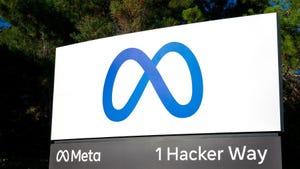NCAR Weather Supercomputer Comes OnlineNCAR Weather Supercomputer Comes Online
The NCAR-Wyoming Supercomputing Center (NSWC) opens its doors today, unleashing a powerful supercomputer on an ambitious agenda of experiments that will eventually help improve predictions of earthquakes, hurricanes and tornadoes.
October 15, 2012


ncar-super-computers-web
The cabinets of the Yellowstone supercomputer, housed in the new NCAR-Wyoming Supercomputing Center in Cheyenne. (Photo by Carlye Calvin of UCAR)
The NCAR-Wyoming Supercomputing Center in Cheyenne, Wyoming opens its doors today, unleashing a powerful supercomputer on an ambitious agenda of experiments that will improve predictions of earthquakes, hurricanes and tornadoes.
The NCAR center is home to Yellowstone, a new 1.5-petaflop IBM supercomputer - enough power to place among the world's top 20 supercomputers. The main components consist of a massive central file and data storage system, a high performance computational cluster, and a system for visualizing the data.
"This center will help transform our understanding of the natural world in ways that offer enormous benefits to society," says Thomas Bogdan, president of the University Corporation for Atmospheric Research, which manages NCAR on behalf of the National Science Foundation (NSF). "Whether it’s better understanding tornadoes and hurricanes, or deciphering the forces that lead to geomagnetic storms, the Yellowstone supercomputer and the NWSC will lead to improved forecasts and better protection for the public and our economy."
10-Foot Raised Floor
The facility will include 24,000 square feet of raised floor data center space, with a 10-foot raised floor and 9-foot ceiling plenum to manage airflow required to cool the IT gear.
The design and construction of the NCAR-Wyoming Supercomputing Center has been developed to be "future proofed," providing the flexibility to expand to adapt to new supercomputing technology as it evolves.
Located in Cheyenne’s North Range Business Park, the 153,000-square-foot data center will provide advanced computing services to scientists across the United States. Most researchers will interact with the center remotely, via a laptop or desktop computer and the Internet.
The NCAR facility was awarded a LEED Gold certification for its sustainable design. The center takes full advantage of Cheyenne’s elevation and cool, dry climate, which allows the use of fresh air to cool the servers year round, significantly reducing the facility's energy use.
Integrates Wind Energy
A minimum of 10 percent of the power provided to the facility will be wind energy from the nearby Happy Jack Wind Farm. NCAR and UCAR say they will continue to explore options to increase the percentage of renewable energy provided to the facility in future years.
The center is a partnership among NCAR, the National Science Foundation (NSF), the University of Wyoming (UW), the state of Wyoming, Cheyenne LEADS, the Wyoming Business Council, and Cheyenne Light, Fuel and Power.
"The NCAR-Wyoming Supercomputing Center will offer researchers the opportunity to develop, access, and share complex models and data at incredibly powerful speeds," said NSF director Subra Suresh. "This is the latest example of NSF's unique ability to identify challenges early and make sure that the best tools are in place to support the science and engineering research communities."
Bogdan and Suresh took part this morning in a formal opening ceremony with Wyoming Gov. Matt Mead, University of Wyoming (UW) vice president of research relations William Gern, NCAR director Roger Wakimoto, and other political and scientific leaders.
For more on the design of the NCAR facility, see "Designing A New Type of Data Center," our Industry Perspectives article from project architect H+L Archtecture.

ncar-super-computers2-web
Another view of the Yellowstone supercomputer, housed in the new NCAR-Wyoming Supercomputing Center in Cheyenne. (Photo by Carlye Calvin of UCAR)
About the Author
You May Also Like







